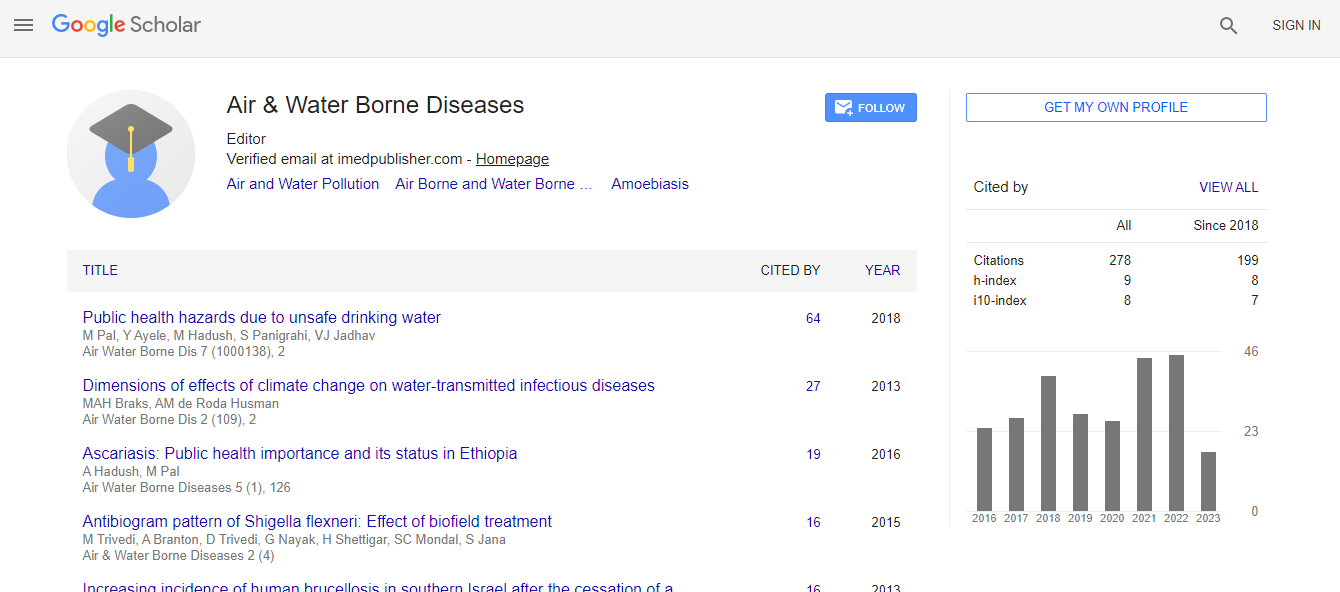Case Report
Antibiogram Pattern of Shigella flexneri: Effect of BioField Treatment
Mahendra Kumar Trivedi1, Alice Branton1, Dahryn Trivedi1, Gopal Nayak1, Harish Shettigar1, Sambhu Charan Mondal2 and Snehasis Jana2*1Trivedi Global Inc., 10624 S Eastern Avenue Suite A-969, Henderson, NV 89052, USA
2 Trivedi Science Research Laboratory Pvt. Ltd., Bhopal-462026, Madhya Pradesh, India
- *Corresponding Author:
- Dr. Snehasis Jana
Trivedi Science Research Laboratory Pvt. Ltd.
Hall-A, Chinar Mega Mall
Chinar Fortune City, Hoshangabad Rd.
Bhopal- 462026, Madhya Pradesh, India
Tel: +91-755-6660006
E-mail: publication@ trivedisrl.com
Received Date: August 06, 2015; Accepted Date: September 23, 2015 ; Published Date: September 25, 2015
Citation: Trivedi MK, Branton A, Trivedi D, Nayak G, Shettigar H, et al. (2015) Antibiogram Pattern of Shigella flexneri: Effect of Bio Field Treatment. Air Water Borne Diseases 3:122. doi:10.4172/2167-7719.1000122
Copyright: © 2015 Trivedi MK, et al. This is an open-access article distributed under the terms of the Creative Commons Attribution License, which permits unrestricted use, distribution, and reproduction in any medium, provided the original author and source are credited.
Abstract
Shigellosis is a major public health burden in India and its neighboring countries due to infection of Shigella species. The current study was attempted to investigate the effect of biofield treatment on Shigella flexneri (S. flexneri) with respect of antimicrobial susceptibility assay, biochemical characteristics and biotyping. The American Type Culture Collection (ATCC 9199) strain of S. flexneri was used in this experiment. The study was conducted in revived and lyophilized state of S. flexneri. Both revived (Group; Gr. II) and lyophilized (Gr. III) strain of S. flexneri were subjected to Mr. Trivedi’s biofield treatment. Gr. II was assessed on day 5 and day 10, while Gr. III on day 10 after biofield treatment with respect to control (Gr. I). The antimicrobial susceptibility of S. flexneri showed 35% alteration in Gr. II on day 10 while no alteration were observed on day 5 (Gr. II) and in Gr. III as compared to control. The minimum inhibitory concentration (MIC) values of biofield treated S. flexneri also showed significant (46.88%) alteration in Gr. II on day 10 while no alteration were observed on day 5 (Gr. II) and in Gr. III as compared to control. It was observed that overall 24.24% biochemical reactions were altered in which 21.21% alteration was found in Gr. II on day 10 with respect to control. Moreover, biotype number was changed in Gr. II on day 10 with identification of new organism i.e. Edwardsiella tarda (40015042) as compared to untreated strain of Shigella species (40010000). The result suggested that biofield treatment has significant impact on S. flexneri in revived treated cells (Gr. II) on day 10 with respect to antimicrobial susceptibility, MIC, biochemical reactions pattern and biotyping.

 Spanish
Spanish  Chinese
Chinese  Russian
Russian  German
German  French
French  Japanese
Japanese  Portuguese
Portuguese  Hindi
Hindi 